Time after time in training, one game after another, is the athlete’s training at peak level?
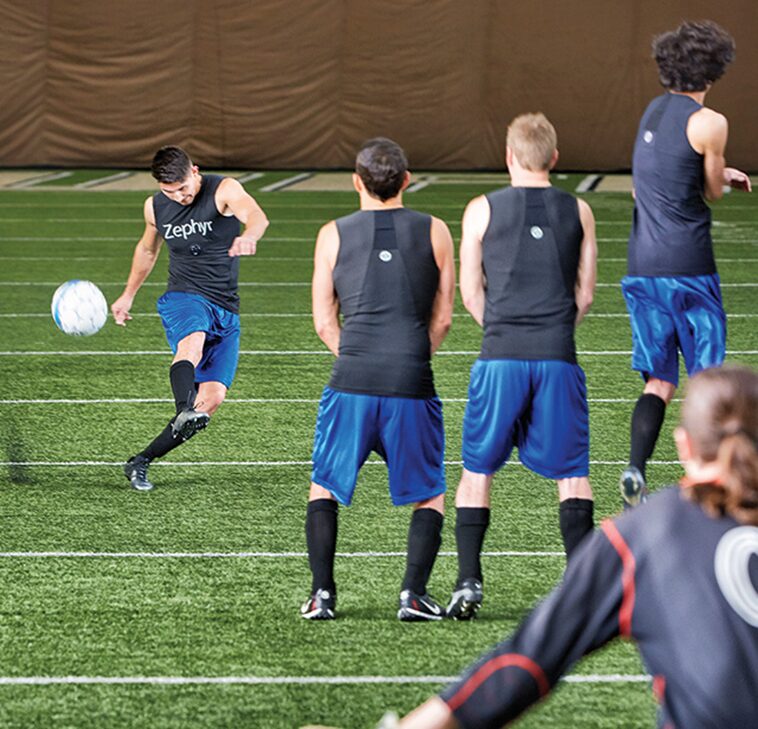
Athletic performance monitoring provides the necessary tools and data, supplementing the subjective assessment of athlete performance through objective measurements of vital signs and physiological and biomechanical movements. This scientific approach can help formulate training plans to keep athletes in optimal condition.
The Zephyr real-time monitoring system is a physiological monitoring system that can be applied by multiple users simultaneously. It uses biological module testing technology and Omnisense software to measure, transmit, and record various physiological and biomechanical data, analyzing the physiological status of teams or individuals, and formulating targeted training programs based on the athletes’ physical conditions to help each athlete achieve optimal performance.
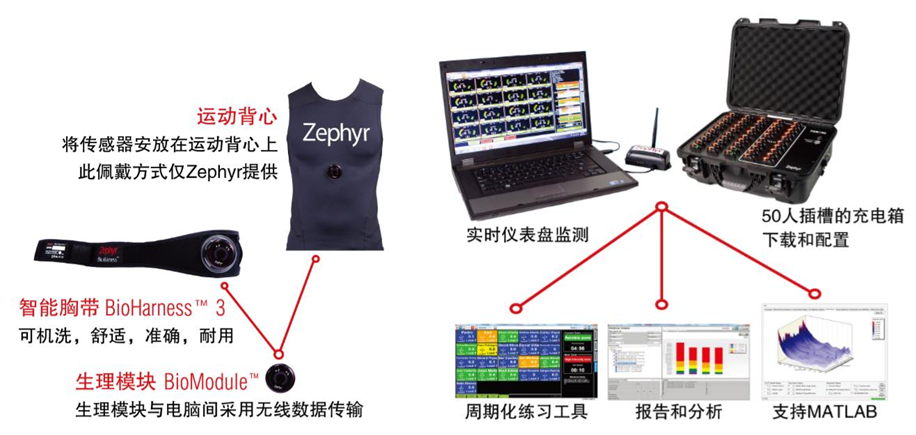
❶ Physiological Load
Cardiovascular demand measured through heart rate.
❷ Mechanical Load
Demand on skeletal muscles measured through acceleration.
❸ Training Load
Average physiological load and mechanical load.
❹ Training Load
Average physiological load and mechanical load.
❺ Athlete Efficiency
Determining which athlete has higher cardiovascular levels and greater explosiveness on the field. The relationship between physiological load and mechanical load is a more valuable analytical basis.
❻ Impact Force
Observing which athlete experiences greater impact force. This metric helps reduce injuries during the season.
Zephyr Omnisense Analysis Software
Provides heart rate zones, heart rate recovery, calorie consumption, and many more metrics during specific times in training.
Provides physiological and mechanical training loads and intensities. It also provides total training load and standard deviation, thereby defining low, medium, and high-intensity training.
Provides time and distance across all speed ranges on the field, including maximum and average speeds.
Athletes with high efficiency scores (percentage) exhibit strong cardiovascular function and greater explosiveness.

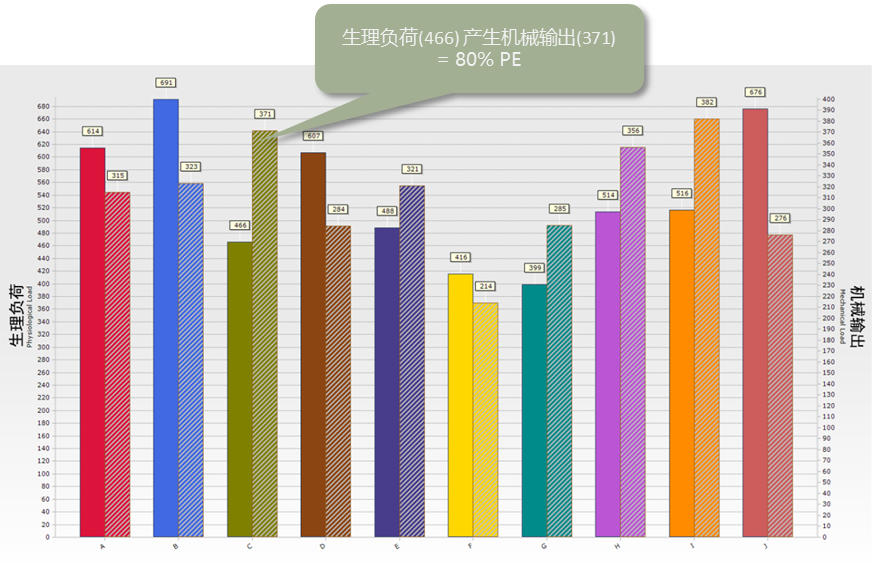
Player C is the most efficient. Player J is the least efficient. However, it is more important for Player J to compare with himself. Since his heart rate may be higher than that of other athletes, establishing a heart rate baseline will help improve.
The Significance of Athlete Efficiency Detection
Defining Physical Fitness Levels
Athlete efficiency helps determine seasonal physical fitness. The ideal state is low physiological load with high mechanical output.
Distinguishing Acute and Chronic Fatigue
A decrease in athlete scores indicates that the player is experiencing exercise fatigue (acute state), which may be caused by high-intensity training in the previous days, or chronic fatigue, reflected in a stable decline in scores.
Load Feedback
Efficiency is a good way to observe athletes’ responses to periodic training loads, and to make corresponding adjustments based on load feedback, thereby avoiding overtraining, reducing injury risk, and helping to prevent deconditioning.
Heart Rate
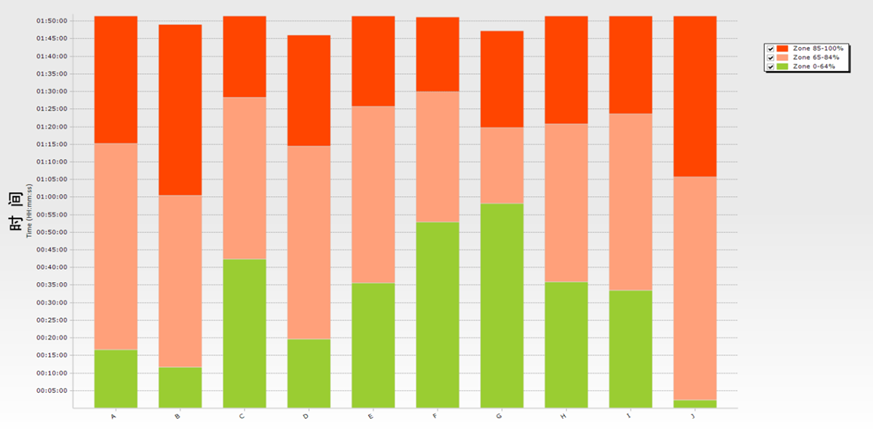
Athletes spend approximately 25% of their time in high heart rate zones (red), and 40% in moderate heart rate zones (orange). Match data suggests that athletes should maintain about 30% (+) of their time in the red zone and approximately 30% in the orange zone. This data is commonly used to monitor physiological intensity to meet project demands.
Calorie Burning

The calories burned by athletes during exercise is the energy used beyond their daily expenditure. Athletes average 1439 calories burned during a training session. If an athlete’s BMR (Basal Metabolic Rate) is 2000 calories, then a total of 3439 calories is needed during exercise to meet bodily demands, aiding recovery and maintaining current body composition.
Main Impact Force

The number of impacts exceeding 7G experienced by athletes. The angle of the impact is used to distinguish explosiveness. The numbers represent the impact counts of athletes, which are meaningful for maintaining athlete “health.” Over time, the main impact force accumulates and is used to infer its influence on athletic performance. Athlete F (goalkeeper) is likely to experience multiple impacts with the ground.
Distance
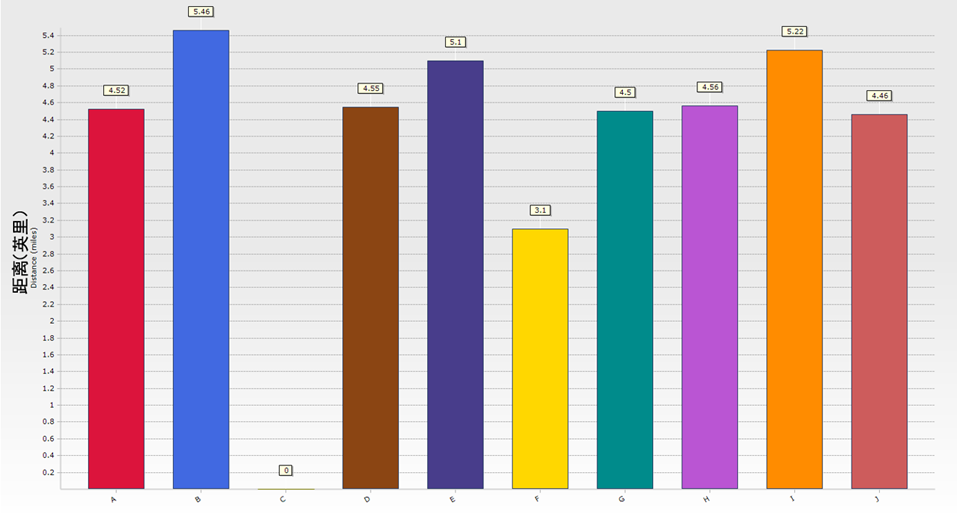
The GPS distance provides the total distance covered by players during training. Player B covered the longest distance. Test distance data can be used to compare with project requirements to assist in managing training loads.
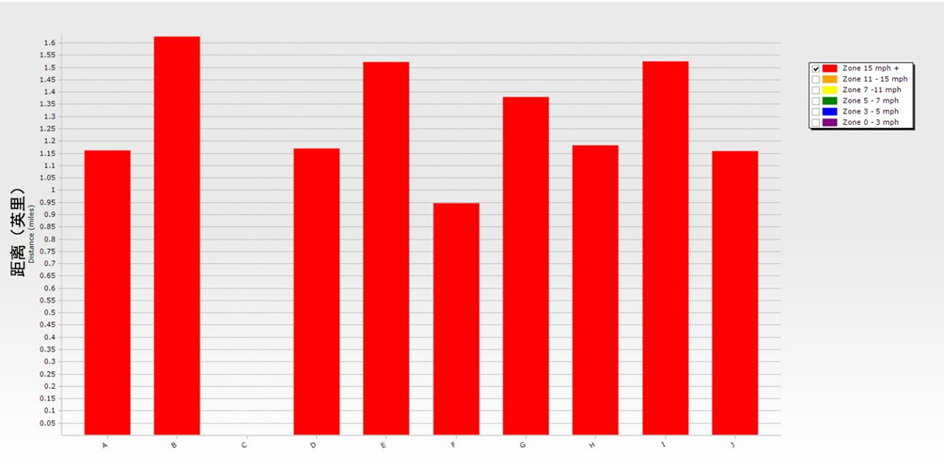
The study defined ranges for speeds of 25 km/h (15 mph) or higher, with the team averaging 1.32 miles in the high-speed zone (see GPS report for details).

The study defined ranges for speeds of 25 km/h (15 mph) or lower, with the team averaging 3.3 miles in the low-speed zone (see GPS report for details).
Maximum Speed
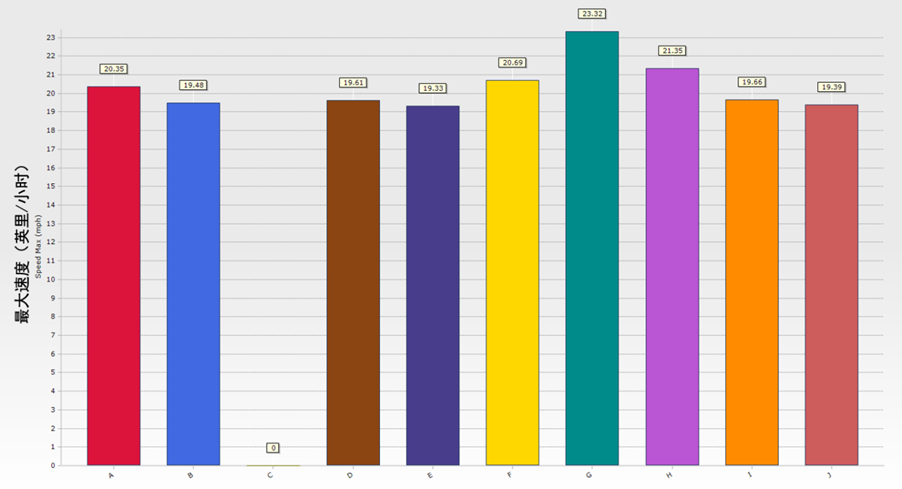
Athlete G has the highest speed, reaching a maximum of 23.32 mph.


Zephyr Omnisense



Training Load = 425.67 (SD = 59.02)
Based on this, the approximate definitions of low, medium, and high-intensity training load structures are as follows:
-
High Intensity: 425.67 + 59.02 => 484.69
-
Medium Intensity: 425.67
-
Low Intensity: 425.67 – 59.02 = < 366.65
Progressive Overload
Research on training load and sports injuries indicates that increasing load by no more than 10% per week will enhance training effects without increasing injury risk (exceeding 10% load increment increases injury risk by 49%). High-intensity overload training will improve athletes’ physical fitness from 468 to 511 (see references below).
Baseline Data
The spring season is an excellent opportunity to define event demands and accurately detail training structures.
Adjust Training Load Based on Athlete Feedback
Training feedback should be based on evaluating athletes’ weekly training efficiency rather than training load. The Zephyr system incorporates the “readiness score” into the indicator system to enhance evaluation effectiveness.
Reducing Pre-Season Training Load’s Impact on Team Athletes’ Injury Rates
and Aerobic Capacity
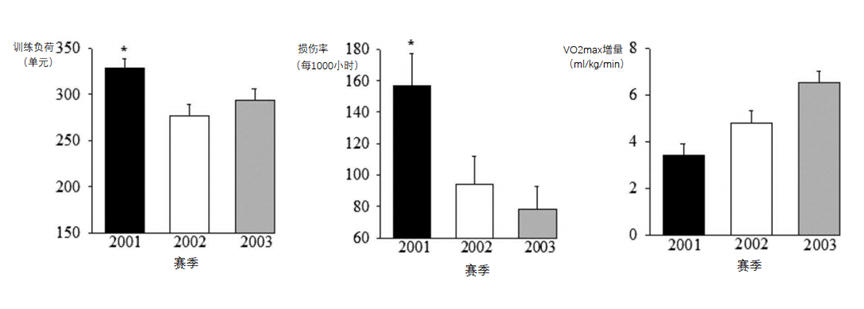
Possibility of Injury from Different Training Load Variations
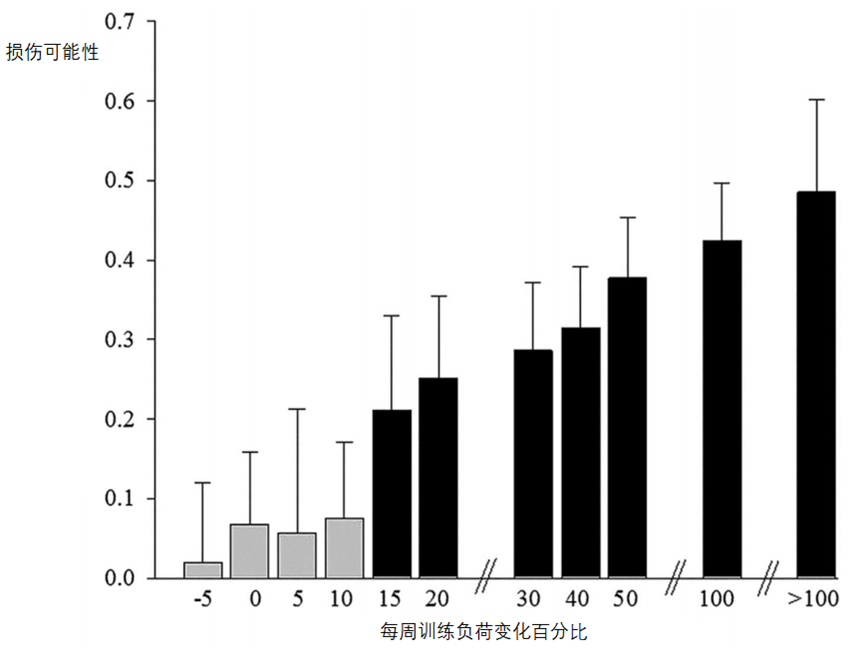
Source: Tim J Gabbett Br J Sports Med doi:10.1136/bjsports-2015-095788
In the future, we will provide more information related to athletic performance monitoring, please stay tuned.
If you are interested in our article, please indicate the source when reprinting.
Special Reminder: The “Pukang Health” WeChat public account provides knowledge and product information in the fields of rehabilitation medicine, sports science, and physical health. In the process of writing and compiling articles, we trace scientific sources as much as possible to ensure their authenticity, scientificity, and authority. The information provided in the article is for your reference only. If you find any errors in the article, please inform us in a timely manner. Thank you for your support and understanding.

